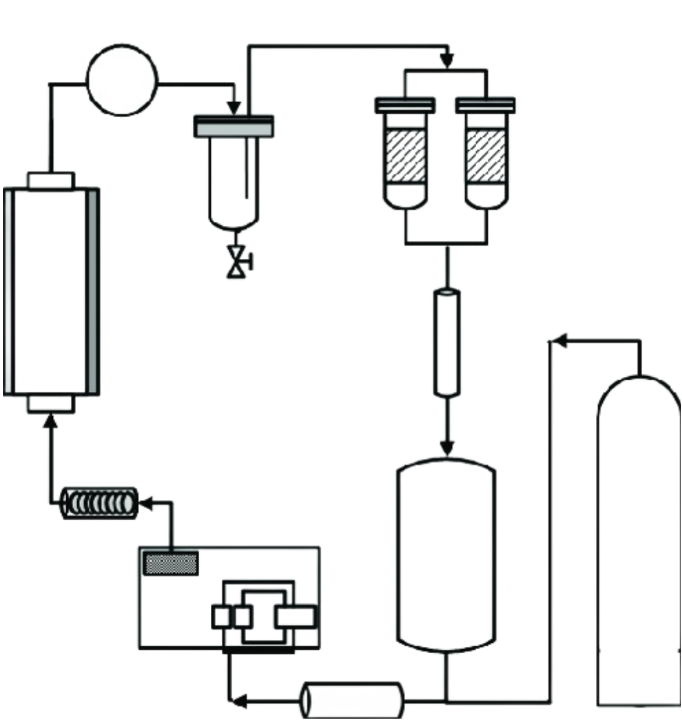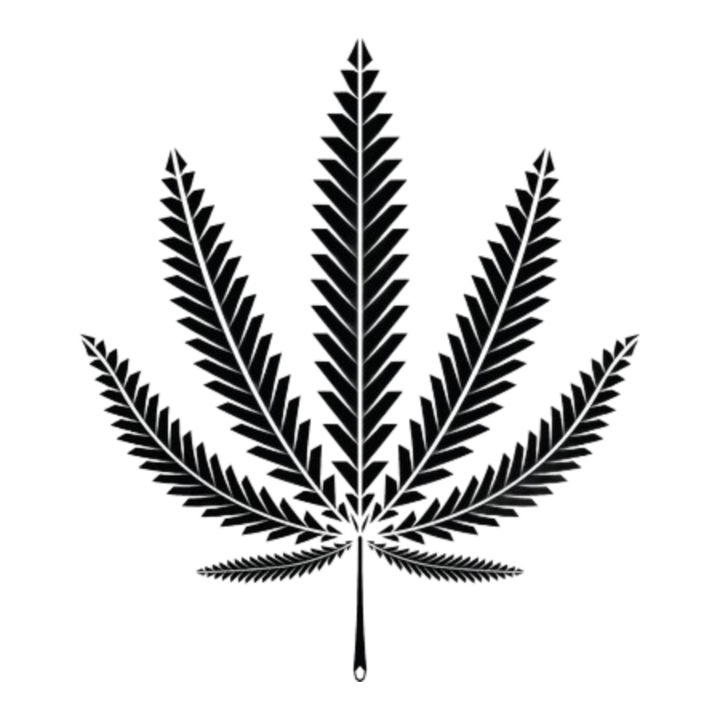Hemp originated in Central Asia. Hemp cultivation for
fibre was recorded in China as early as 2800 bce and
was practiced in the Mediterranean countries of Europe early in the Christian
era, spreading throughout the rest of Europe during the Middle Ages
Based on total acres
of land used for growing hemp, the top hemp cultivating countries are:
- Canada - 137,000 acres.
- China - 114,000 acres.
- France - 42,100 acres.
- USA - 25,700 acres.
- In overall hemp is being grown all around the world except Africa
It’s
no secret that hemp is a miracle plant. From the myriad of hemp clothing
benefits to the innovative
creation of hemp toilet paper, this plant is one with a wide
array of contributions to sustainability.
But
even if you consider yourself an expert on the subject, get ready to be
pleasantly surprised by these hemp facts. I’ve rounded up the most fascinating
information on hemp’s history and modern use. So read on to find out the
wildest facts about hemp, like what famous works were created on hemp paper,
which founding fathers were fans of hemp, and so much more.BEST
SELLERS
1. HEMP WAS CONSIDERED THE FIRST DOMESTICATED PLANT
Hemp
is thought to be one of the first cultivated plants globally, dating back 6,000 years in China and back to 8000 BCE in ancient
Mesopotamia (modern-day
Turkey). Archeologists have found hemp fibers and seeds at sites in China and
near Ankara, meaning the plant had an early use for cloth.
Even
the famous Chinese herbalist and emperor, Shen-Nung, who lived in the 28th
century BCE, used and taught about
medicinal ma, the word for “cannabis,” or hemp. Today, China is
the world’s largest producer of hemp, which is partly why WAMA sources
all hemp in China!
2. HEMP IS NATURALLY ANTIBACTERIAL
One
of the main reasons I’m a devoted hemp fan is that it makes naturally
sustainable and antibacterial
underwear. I know it sounds a
little gross, but think about what your undies do for you and then imagine the
bacteria party down there. With breathable weed underwear, you don’t have to worry about
bacterial buildup or smell.
My
go-to styles are high waisted underwear (hallelujah high waisted is
fashionable) or thong underwear (sometimes it’s necessary).
And seriously, you can spend all day in a hemp thong and not smell. Girl Scouts
honor! I basically live in hemp undies and a hemp bra, so I feel like an expert.
For
guys, try mens boxers for a more relaxed fit or
opt for a traditional cut with the mens briefs. And it doesn’t stop with
undies.
3. HEMP IS STRONGER THAN STEEL
Wait,
is hemp stronger than
steel? How is that
possible? Okay, you can’t really compare a stalk of hemp to a steel pipe, but
when you use hemp plant fibers to create a material similar to steel,
it’s 1,000% stronger. I know, I was shocked, too!
It
gets a little scientific, but basically, you can break down hemp cellulose
(plant fibers), create a liquid, and then mold it into a solid. And when
comparing that hemp solid to solid steel (using something called tensile
strength—how much pressure something can take before it breaks), hemp is far
stronger.
4. HENRY FORD MADE A CAR OUT OF HEMP
To
further prove that hemp is stronger than steel, did you know that Henry Ford
made a car out of hemp? And to validate its strength, he took a sledgehammer to
it! Not only was it 10x stronger than a traditional car, but it also weighed 300 lbs less
and had 25% better fuel efficiency.
Although
Henry Ford created his hemp car in 1941, it was never manufactured. But thanks
to the 2018 farm bill supporting industrial
hemp, the idea has
reemerged and many of the biggest car companies use hemp in the manufacturing process, including BMW, Mercedes, Audi,
and Volkswagen. There’s even an airplane made with
hemp!
5. HEMP HELPED THE ALLIES WIN WWII
Of
all the facts about hemp, this story might be the most interesting! Think back
to Henry Ford for a moment. Why wasn’t his hemp car manufactured? One article details the history, as the
U.S. government didn’t differentiate cannabis with higher THC levels (the
substance that makes you high) with hemp, which has less than 0.3% THC (so
there’s no psychological influence). So cannabis and hemp were lumped together
and made illegal.
But
in WWII, the U.S. couldn’t import ship-building materials (often made with
hemp) from Japan, so they started a program called “Hemp for Victory.” This
allowed farmers to cultivate and manufacture hemp for a short period of time
to make things like canvas, rope, and shipping supplies.
6. LEVI JEANS WERE ONCE MADE WITH HEMP—AND IT'S MAKING
A COMEBACK!
During
the 1850s gold rush in California, Levi Strauss (the man behind the American
staple) made pants out of hemp canvas for miners. They were durable, dyed blue to
minimize stains, and had riveted pockets to withstand pockets of gold. Perfect
for the work, they grew in popularity, and the rest is history.
Today,
Levi’s takes a page from its origin story and uses a cotton-hemp
blend to perfect its
Wellthread line. Just one pair of classic cotton denim
blue jeans requires over 900 gallons of water, from crop to manufacturing. By
using this new blend, the company can reduce its water consumption by 30%.
7. THE PRESIDENTS’ OF USA GREW HEMP
Although
the 1937 Marijuana Tax Act criminalized growing hemp, the
plant was quite popular in the 19th and 18th centuries. In a real plot twist,
it was actually against the law if you didn’t grow
hemp in some places. And to make it even juicier, the Founding Fathers were
huge fans.
8. THE USA DECLARATION OF INDEPENDENCE WAS WRITTEN ON
HEMP PAPER
Because
the Founding Fathers saw the promise in hemp products, they knew that hemp paper
doesn’t yellow over time. So the paper that’s hundreds of years old in museums
hasn’t appeared to age, including the first two drafts of the Declaration of
Independence. Other fun hemp paper facts: Mark Twain’s works, the King James
Bible, and Lewis Carroll’s Alice in Wonderland were all first
printed on hemp paper.
9. VAN GOGH PAINTED ON HEMP PAPER
Besides
the written word, hemp paper also supported much of the art world, including
some of the most famous masterpieces by Van Gogh, Rembrandt, and many
other early canvas painters. But it wasn’t just the
high-archival quality that drew artists to hemp. Hemp seed oil was once a huge
producer of paints.
One
of my favorite facts about hemp is that the United States used over 50,000 tons of hemp
seeds to make paint
products. And that was just in the year 1935—one year! But, unfortunately, the
1937 Marijuana Tax Act stopped this production, and even Sherwin Williams Paint
Company was an opponent of this new law.
10. YOU CAN BUILD HOMES OUT OF HEMP
If
hemp is strong enough to build a car and an airplane, it can definitely make a
house! And the best part is that it would be stronger than a traditional house,
as concrete mixed with hemp fibers is more durable with 20% more strength.
One
site in Britain uses “hempcrete” rather than concrete, a mixture
of limestone and hemp. It’s stronger and also allows the industry to lower
carbon emissions. One building using hempcrete produced just 100 to 150 tons of CO², where a traditional brick
building would generate 3-6x that. According to the site, other
construction-related bonuses include:
- Hempcrete is
non-toxic, so your home would hold less dangerous toxins
- Hemp regulates
moisture and heat, saving you up to 50% on electricity and gas
- Hemp fibers are
faster and cheaper to grow, so you have a happier bank account
11. HEMP SEEDS CAN SOLVE WORLD HUNGER
Hemp
seeds are full of nutrients and much easier to grow, so they can help solve
world hunger. This is clearly one of the best facts about hemp! Hemp seeds
are high in protein (a plant-based protein) and
contain other nutrients like Omega-3’s, iron,
calcium, and more.
A case study in countries within
southern Africa showed that hemp could be a powerful food aid as the climate
and soil conditions change because
- Hemp grows quickly
- Hemp is less expensive to cultivate
- Hemp is a reserve crop and can tolerate
harsh environmental conditions (like drought)
- Hemp has a higher nutritional value than
other grains and rice.
12. YOU CAN EAT HEMP LEAVES
Besides
the nutrient-dense hemp seeds, you can also eat the leaves. But I must warn you
that they’re very bitter to eat on their own, so you might want to try them in
a juice or smoothie first! Either way, hemp leaves give you some serious
benefits. You can find over 80 compounds in the leaves alone,
including CBD, which offers tons of antioxidants.
Because
of the high dose of antioxidants, eating hemp can help slow certain diseases
linked to oxidation, like cancer or inflammation. And if you’re vegan or
vegetarian, you’ll be happy to know that hemp leaves have Omega 3 and 6 fatty acids so that you can get those
essential nutrients from a plant-based source!
13. HEMP CAN GROW ALMOST ANYWHERE & ENRICHES SOIL
Another
factor adding to hemp’s strength is its durability as a plant. It’s super
versatile and can grow almost anywhere. If you’re like me and can’t keep a
plant alive for more than a week, maybe you should get a hemp plant, as it
doesn’t need a lot of attention! It can grow in extreme conditions, including flooding, drought-stricken areas, and within degraded soil.
While
needing little support (and 50% less water than growing cotton),
hemp improves its own soil
quality. Plus, hemp requires
less water and irrigation, pesticides, and fertilization. And as a deep-root
plant, it improves soil health by enhancing microbial diversity. So not only
can it grow almost anywhere, but it’s also highly nutritious and restores soil
health.
14. HEMP EXTRACTED TOXINS FROM CHERNOBYL
You’ve
probably heard about the devastating nuclear disaster in Chernobyl in the
1990s, but what you might not know is that hemp helped clean up the site.
Scientists harnessed hemp’s ability to absorb and
extract toxins from the soil
and neutralize them. And because of this event, the world discovered that hemp
could successfully extract lead, cadmium, and nickel.
15. HEMP FIGHTS PMS
This
is one of the hemp facts I’m here for: those fatty acids found in hemp seeds do
wonders for PMS symptoms, especially cramps, aches, and pains. You can thank a
little hormone called prolactin for those standard period pains, and the
gamma-linolenic acid (GLA) in hemp seeds reduces the effects.
One study, in particular, proved this
superpower and gave women 210 mg of GLA in hopes of easing PMS symptoms. Nearly
all showed improvements with significantly less cramping and aches. So if you
need me, I’ll be stocking up on hemp seeds.
16. THERE ARE SUSTAINABLE BATTERIES MADE FROM HEMP
Yes,
you read that right—Canadian scientists built cheaper and
eco-friendly batteries using hemp pulp. I mean, is there anything hemp can’t do?
It’s
a little complicated, but basically, scientists found that hemp fibers held
just as much energy as graphene, which is the material used to make
supercapacitors (energy storage devices). To hold more power, supercapacitors
need better electrodes, which are typically expensive. But after heating hemp
fiber at a very hot temp (350 degrees), it can become carbon nanosheets and
used to make electrodes.
The
team behind this discovery used the center of the hemp stalk, which is usually
thrown out as waste when making hemp fabric. It’s a great way to use more of
the hemp plant and create supercapacitors that can recharge in just seconds!
17. WE CAN MAKE BIOFUEL FROM HEMP
Hemp
seed has oil content between
26% and 38%, which can be used
to create hemp biodiesel. A study by the University of
Connecticut showed a 97% success rate when converting hemp seed oil into fuel,
meeting all the necessary standards. The fuel safely functioned in a standard
diesel engine, so it doesn’t require a different engine.
One
of the biggest perks of hemp biofuel is that it doesn’t compete with food
sources. Many biofuels require crops that can
produce high energy,
like corn, sugar beets, and wheat, all things humans and livestock eat. As a
bonus, the hulk (woody center of the hemp stalk), typically discarded anyway,
can be used for ethanol.
18. HEMP IS THE STRONGEST PLANT FIBER IN THE WORLD
& YIELDS MORE
You
now know that hemp is stronger than steel, but it’s also the strongest plant
fiber in the world—stronger than cotton, linen, bamboo, etc. When it comes
to hemp vs cotton, hemp is stronger, softer, lasts
twice as long, and won’t mildew.
As
a bonus, hemp produces far more plant fibers than its competition. One
acre of hemp produces 2-3x more fibers than cotton and 4x more than trees. To
be ready for harvest, a tree must grow from 40 to 100
years. But hemp is ready for harvest in just 120 days—and the crop is stronger,
lighter, and lasts longer (hemp paper can last hundreds of years before it
starts degrading). It’s honestly a no-brainer at this point!
19. HEMP CAN REPLACE PLASTIC
Hemp
can replace cars, airplanes, houses, clothing, paper, batteries, fuel… and
plastic, too. Almost any kind of plastic can be made from hemp, including:
- Celluloid—used to make everyday plastics and hard plastics, including
tennis balls, film, toys, Tupperware, chairs, toothbrushes, utensils, water
bottles, etc.
- Cellophane—used to make flexible plastic materials, like cling
wrap, bags, packaging, tape, tubing, etc.
- Rayon—used to make plastic-based textiles, such as polyester,
spandex, artificial silk, and velvet.
Almost every type of plastic you can think of comes
from these three variations, meaning that hemp could replace all plastic. And
hemp plastic is actually
stronger
than petroleum-based plastic and
non-toxic. What a world we could live in!


